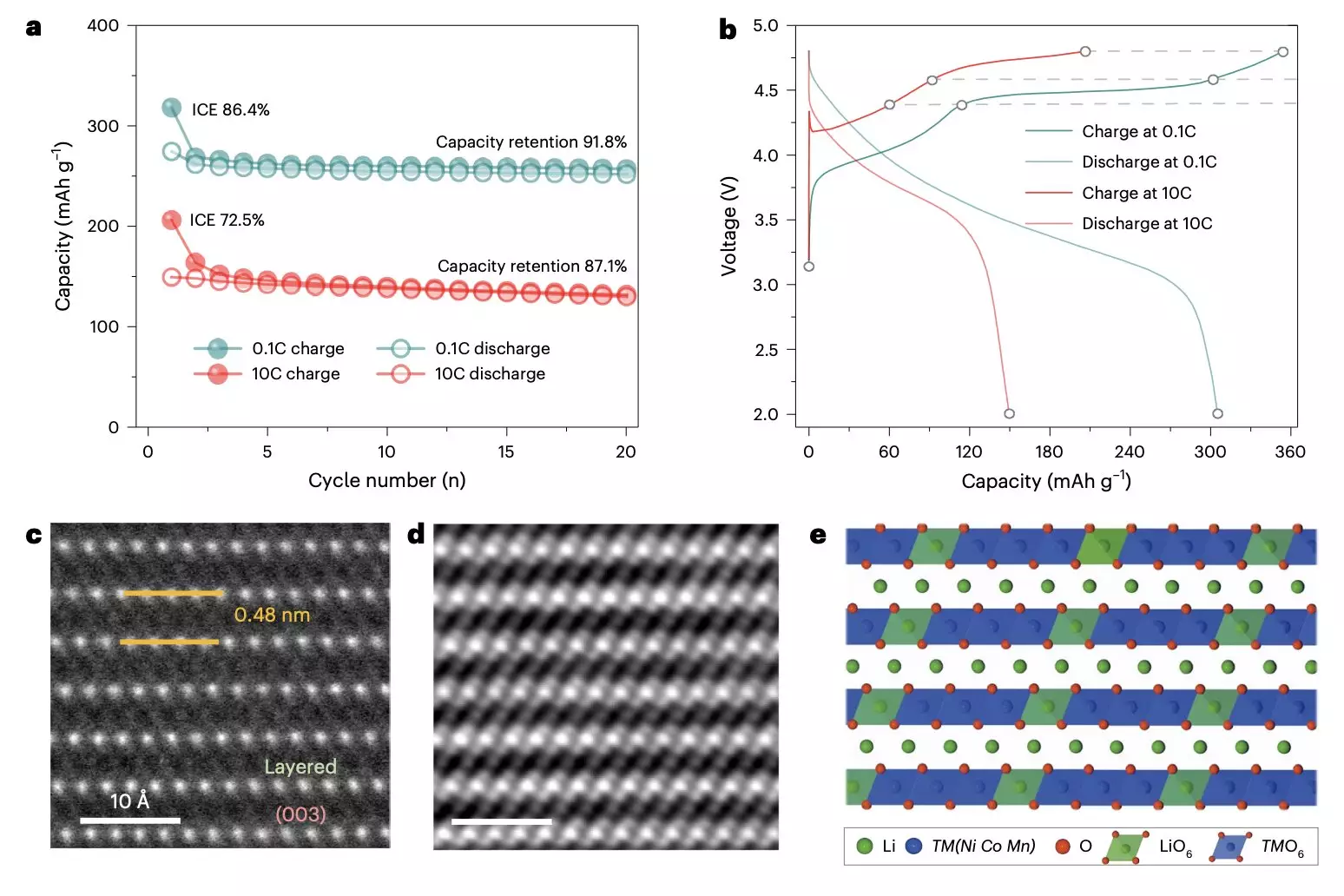As the demand for efficient energy storage systems escalates, research into battery technology has gained unprecedented momentum. Researchers are tackling major challenges such as enhancing energy density, maximizing recharge efficiency, prolonging battery lifespan, and ensuring stable discharge rates. The ongoing innovations in battery technology are vital to support the increasing ubiquity of electric vehicles (EVs) and portable electronic devices. Among these innovations, layered lithium-rich transition metal oxides have emerged as potential game-changers. Their unique properties offer hope for revolutionizing how batteries are designed and operated.
Layered lithium-rich cathodes are at the forefront of this exploration due to their inherent structural advantages. The layered design permits lithium ions to navigate between the layers efficiently during charge and discharge cycles. This characteristic enhances energy storage capabilities, making these materials attractive for both consumer electronics and electric vehicles. The presence of transition metals like manganese, cobalt, and nickel, coupled with oxygen anions, leads to efficient redox reactions, crucial for the performance of rechargeable batteries. The ability of these materials to host a greater number of lithium ions adds to their energy density, thus presenting an opportunity for significant improvements in battery technology.
Despite the promising characteristics of layered lithium-rich transition metal oxides, researchers face considerable challenges concerning their longevity. Many cathode materials exhibit a troubling tendency to deteriorate quickly, losing their voltage and efficiency over time. Critical investigations have uncovered that these degradation processes are multifaceted and intricate, involving a range of structural, chemical, and thermodynamic factors. Crucially, understanding the pathways leading to battery degradation is essential to unlocking the full potential of these cathodes for widespread application.
A collaborative study involving prominent institutions, such as Sichuan University and Southern University of Science and Technology, has shed light on these degradation mechanisms. Published in *Nature Nanotechnology*, the findings emphasize the researchers’ thorough approach to dissecting the behaviour of layered lithium-rich oxides at different scales—from individual atoms to complex particle structures. Utilizing advanced imaging techniques, particularly energy-resolved transmission X-ray microscopy (TXM), the team built a comprehensive picture of the cathode’s performance and failure modes.
Through their meticulous investigation, they identified key factors contributing to the degeneration of these cathodes. One striking observation was the formation of oxygen defects during battery operation, which were exacerbated by varying charge rates. These defects prompted complex degradation pathways, including phase transformations that ultimately resulted in structural instability within the battery components. The research highlighted that rapid lithium ion movement, termed ultrafast (de)intercalation, led to significant lattice distortions, transition metal ion dissolution, and alterations in lithium site availability—all detrimental changes affecting cycle performance.
Implications for Future Research
The implications of these findings transcend mere academic interest; they illuminate potential avenues for improving the performance and longevity of layered lithium-rich batteries. By grasping the structural and chemical intricacies responsible for degradation, researchers can channel their efforts toward developing effective strategies that mitigate these effects. Innovations aimed at stabilizing the structural integrity of cathodes could pave the way for next-generation batteries capable of meeting the demands of the modern world.
As the landscape of battery technology continues to evolve, the exploration of layered lithium-rich transition metal oxides holds promise as well as challenge. While these materials present the opportunity for groundbreaking advancements in energy storage solutions, persistent issues related to stability and longevity must be addressed. The ongoing research efforts promise not only to enhance our understanding of these materials but also to guide the development of optimized batteries that could redefine electrical storage capabilities. As such, the future of battery technology is poised for transformation, driven by both pioneering research and the urgent global need for sustainable energy solutions.


Leave a Reply